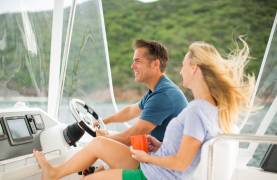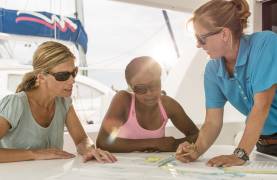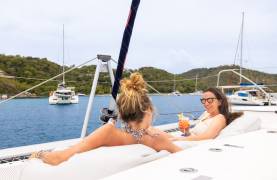
With another successful catamaran launch under our belt – the Moorings 4200 that is now available for charters in the British Virgin Islands, Exumas (Bahamas), Belize, and other destinations worldwide – we would like to take the opportunity to shed some further light, not only on The Moorings-Robertson & Caine partnership but particularly on the thought and design process that goes into each of our award-winning charter catamarans.
For example, when designing a catamaran, you want to ensure that an enormous amount of attention has been given to the layout and set up of the helm. In the design phase, each new model gets a ‘mock-up’, built mostly out of plywood, which includes the helm-seat, steering wheel, winch positions, sheet angles and steps leading to and from the helm.
The reason we do this is the fact that when you are sailing, you will find yourself at the helm or close thereto most of the time. Yes, you will perhaps be on autopilot the majority of the time, but when it comes to reefing, can you do it by yourself or do you need a second pair of hands? Do you need to leave the helm to go on deck? During the “mock-up” stage when designing a new model, these are all questions that are asked to ensure that we build a comfortable and efficient catamaran that can do all of the functions necessary for single-handed sailing.
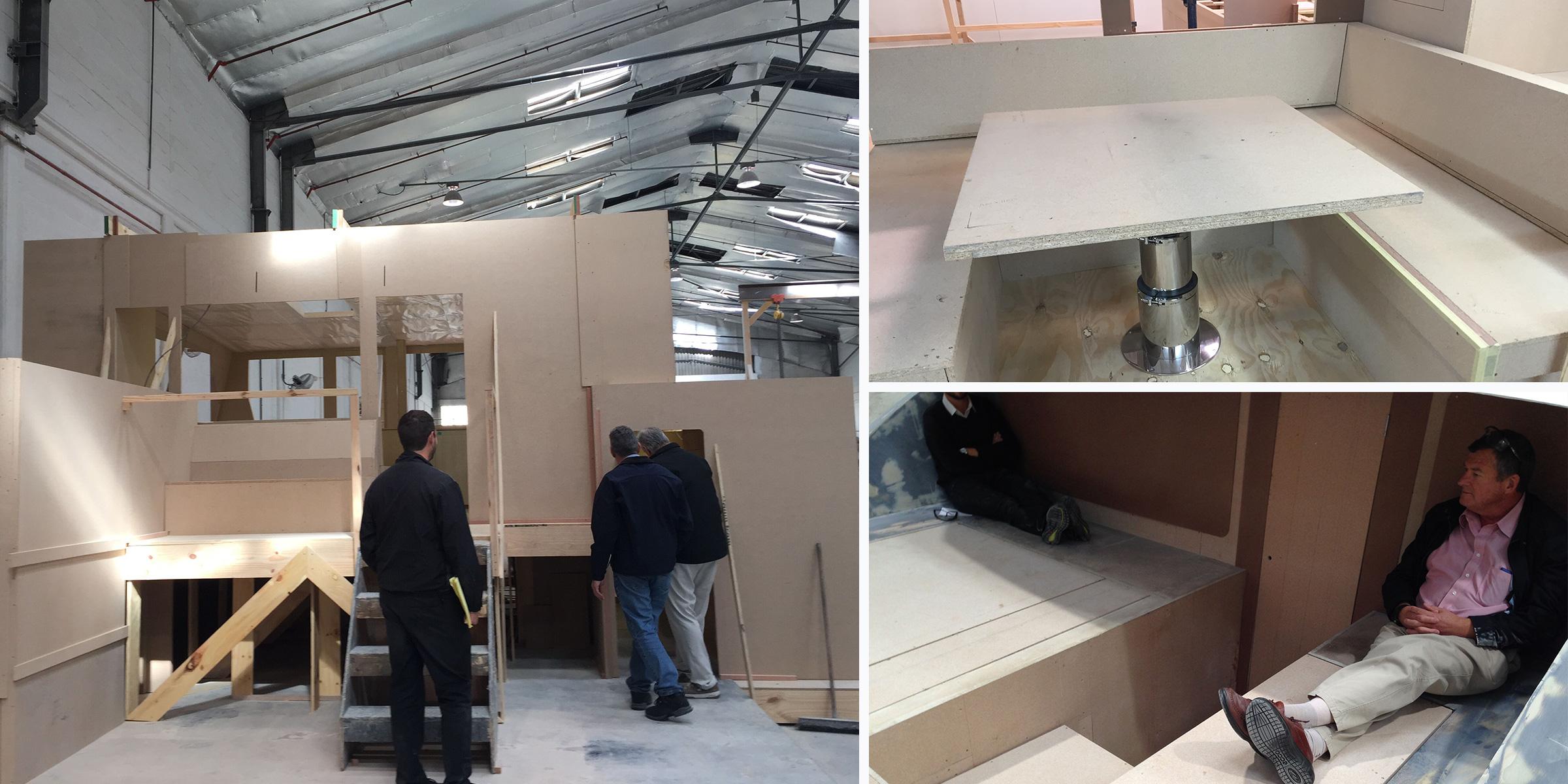
Leading the Pack of Innovation
In cooperation with Robertson & Caine we were the first to design catamarans with a central winch pod. The original concept from the 90’s of having a winch on the coach-roof on the port as well as the starboard side was replaced with the innovative winch pod: 2 winches next to the helm and a turning block for the port side genoa sheet.
The Moorings 4000/Leopard 40 was the first catamaran to boast this innovative feature. The central winch pod makes it very easy to raise the mainsail from the comfort of the helm with an electric winch. On top of this, the reefing line from the genoa furler is lead back from the furling unit on the bow over deck to a turning block close to the helm / winches. This way, you can also use your electric winch to roll in or reef your genoa! What is standard on most cruising catamarans now, was revolutionary just 15 years ago.
The next innovative feature for cruising catamarans was single line reefing for the main sail. A reef line that originates at the clew of the sail is led through the reefing eyes on the sail, to the base of the mast and back to the helm / winch pod. Of course, this is a feature for both reef 1 and 2. If you need to reef, you can, if necessary, do it while sitting in your helm-seat, all by yourself.
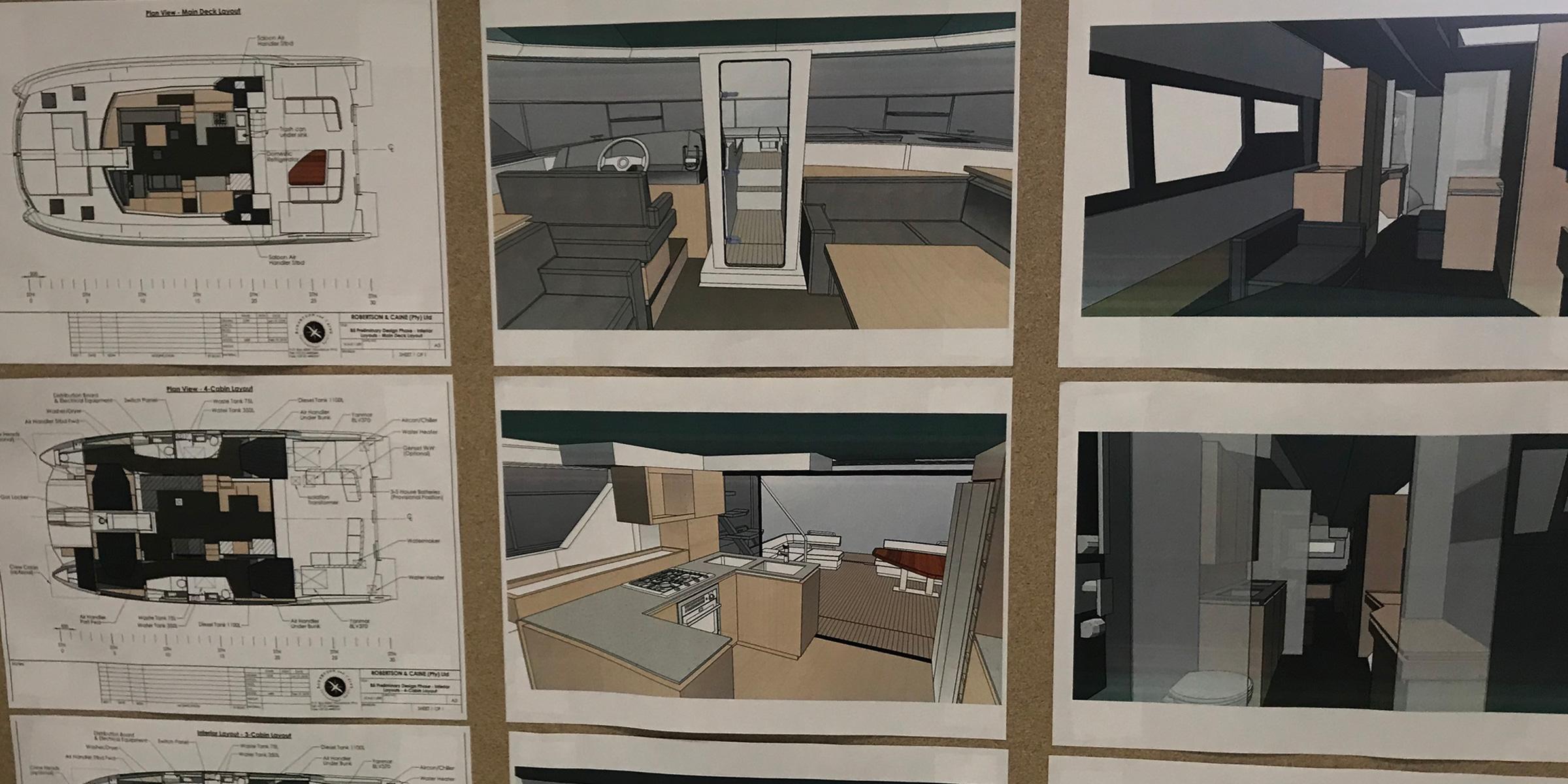
Protection from the Elements
Another consideration when choosing a catamaran is the importance of protection from the elements. Are you protected from the sun, wind and rain at the helm? A flybridge helm on top of the coachroof might look wonderful in pictures and at a boat-show, but who will be sitting there exposed to the elements? Although we wish it could always be smooth sailing, this is not always the case. Where are the winches located on the flybridge? Do you need to move other people out of the way to do any sail operations? How is enhanced boat movement in the ocean on top of the coach-roof? How high is the center of gravity?
All sailing catamarans in The Moorings line have a hybrid helm. The helm is not in the cockpit and not on top, but in between with a separate hardtop over the helm. This way you can keep an eye on your surroundings, while not being excluded from the party and your crew in the cockpit or salon. On the Moorings 5000, the captain is able to stay connected with guests in the cockpit and guests on the flybridge/ lounge.
We don’t compromise on comfort, and we are all sailors at heart: we don’t want to sit under the merciless sun, nor do we want to have sidewind rain or hail battering our faces should the weather ever turn sour. The hardtop over the helm on any Moorings catamaran can be completely or partially enclosed, while maintaining excellent visibility and no noticeable difference in windage.
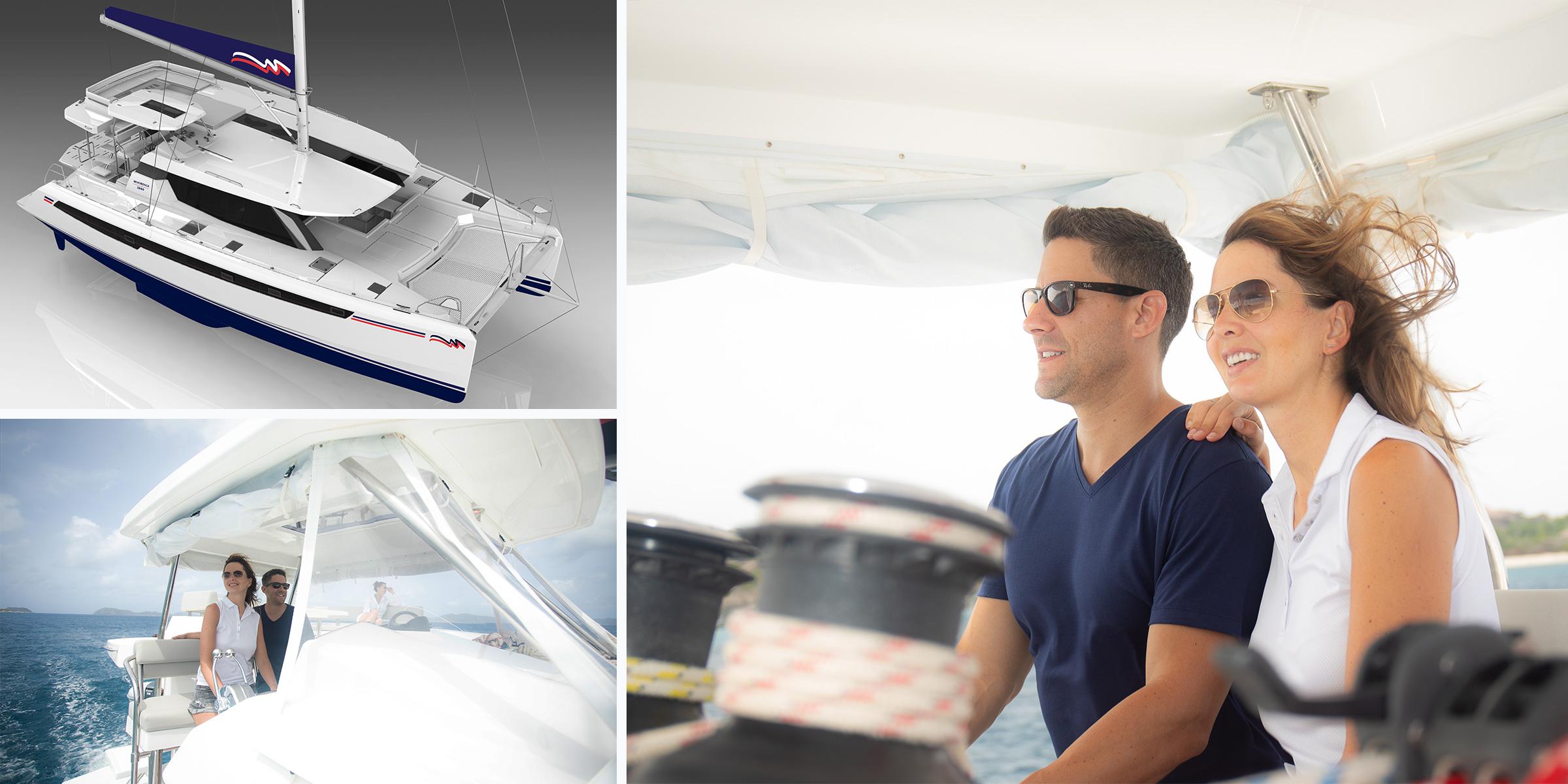
See for Yourself
If you can, you should take the opportunity to come see us at one of our upcoming boat shows to experience for yourself how comfortable a Moorings catamaran is. Take the time to sit at the helm, lean back, stretch your legs next to the steering wheel (yes, we also do that during the concept phase!), reach out to the clutches and winches for the sheets, check out the location of your engine instrument panels. Can you see the alarm light if it were to come on? Can you adjust the course on your autopilot without getting out of your seat?
All of this will show you that chartering with The Moorings will not only ensure comfort for your guests on board, but also smooth sailing for you.
The Production of a Moorings 4000
Based on the original post “Designing the Perfect Helm Station” by Peter Wiersema of Leopard Catamarans. / First published as Moorings blog Sept 2019.
Contributor
Ian Pedersen
Step Aboard Here
Start your experience with The Moorings on land and sign up to receive e-mails from us about yachts, offers and destinations.
By clicking 'Sign up' you confirm that you have read and understood our Privacy Policy and consent to our use of your information.


